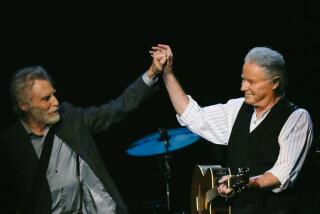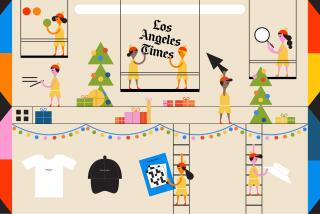The Eagle Has Landed
- Share via
Readers this morning might notice a cleaner, sharper image of the Times eagle in the masthead at the top of this page. This emblem is a representation of the Times bronze eagle sculpture, which weighs more than 200 pounds and has a wingspan of 7 1/2 feet. The eagle statue was designed by Gutzon Borglum, the noted sculptor of Mt. Rushmore, while he was living in Sierra Madre in the 1890s. The statue stood atop three successive Los Angeles Times buildings from the late 19th century through the mid-20th century; it now stands in the Times lobby as a symbol of courage and strength.
The eagle emblem first appeared on the newspaper’s banner and was later placed on the editorial page, where it disappeared and reappeared over the years.
The eagle even once claimed its own column, in which, in 1910, it remarked on the growing population of neighborhoods that have since gone away, and others that remain: “the Italian and Russian quarters and Sonoratown ... West Adams, Chester Place and the Westlake district.” The eagle wondered how many Iowans were here: “I do not know exactly how many ... but they are a-plenty.” (Los Angeles wasn’t called Iowa-by-the-sea for nothing.) The eagle said it also didn’t know how many real estate agents were in town, but decided there were too many of those too. Well, at least some things don’t change.
Just like The Times itself, the eagle’s look over the years has evolved and been streamlined. The emblem once also included a shield, representing defense of the spirit, and an acorn, a symbol of life and independence. Over the years it has retained its two essential elements: a quill pen for writers and journalism and a sword for liberty and justice.
The new version of the Times eagle looks more alert, a good thing, we think, for an editorial page. The eagle continues to look vigilantly out to the right. (Or is it the left? ... depends on the issue.) We hope you find the eagle the symbol of a page that continues a tradition of courage and strength and, not least, clearheaded persuasion.
More to Read
Sign up for The Wild
We’ll help you find the best places to hike, bike and run, as well as the perfect silent spots for meditation and yoga.
You may occasionally receive promotional content from the Los Angeles Times.






